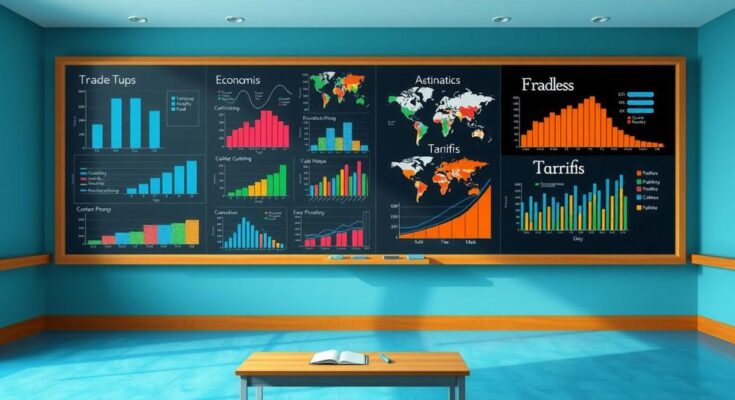President Donald Trump’s new “reciprocal” tariffs have sparked significant criticism and confusion, with analysts commenting that the calculations behind them would be ridiculed in a high school economics class. Wedbush Securities analyst Dan Ives remarked that any student presenting the tariff chart would be dismissed as lacking understanding. The tariffs, aimed at establishing fair trade, will activate a baseline 10% tariff on virtually all countries, beginning at 12:01 a.m. ET on Saturday, followed by reciprocal rates from April 9, 2025.
The specifics of the tariffs raise eyebrows; for instance, while Israel recently reduced tariffs on U.S. goods, it faces a 17% tariff from the U.S. Meanwhile, the remote Heard Island and McDonald Islands receive a 10% duty. This proposal followed a mathematical explanation from a White House spokesperson that revealed questionable reasoning. Instead of a comprehensive analysis of barriers, the administration essentially created tariffs based predominantly on trade deficits in relation to imports.
Goldman Sachs, observing these reactions, noted that the effective tariff rate could rise to 18.8%, exceeding prior estimates. Morgan Stanley calculated it could reach 22%, drastically up from last year’s 2.4%, potentially escalating import prices by 5%. Such drastic increases in tariffs draw alarming parallels to historical precedents, like the Smoot-Hawley Act of 1930.
Economic expert Douglas Irwin and others have cautioned against these unprecedented tariff hikes, suggesting they could lead to severe repercussions for both the U.S. and global economies. The immediate financial markets response was alarmingly steep, with significant drops in stock futures across major indices, raising concerns of a recession.
The spectre of retaliation looms large, with Mexico and Canada poised to respond, and China openly threatening countermeasures against an average tariff of 65%. Commerce Secretary Howard Lutnick signalled ongoing negotiations but dismissed the notion of exemptions for other nations, calling it unlikely, and highlighting the need for fairer international treatment.
Trump’s new tariffs face ridicule for their simplistic calculations, with analysts claiming they wouldn’t pass muster in an economics class. A 10% tariff will apply to nearly all countries, with specific rates announced for others, leading to potential retaliation and worrying economic projections. Analysts indicate long-term negative effects on both the U.S. and global economies, as trade tensions escalate without room for exemptions.
The alarming nature of Trump’s new tariffs raises critical questions about their implementation and potential consequences on both American and global economies. Analysts have highlighted flawed mathematics behind these tariffs, and the proposed rates, reminiscent of past protective measures, could invoke significant retaliation from affected nations. Future discussions seem bleak, as the administration is not considering exemptions, further straining international trade relations.
Original Source: qz.com



